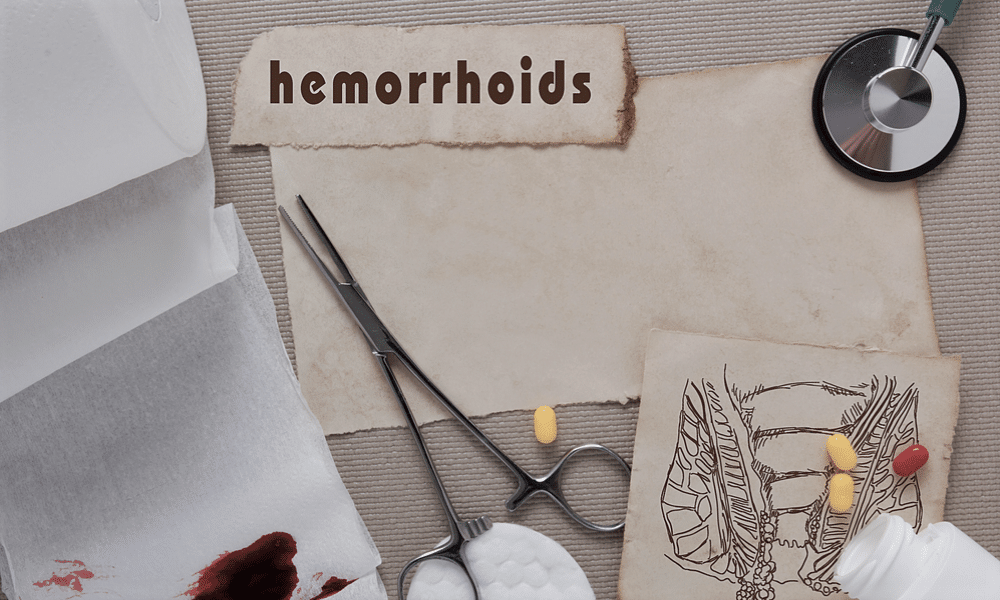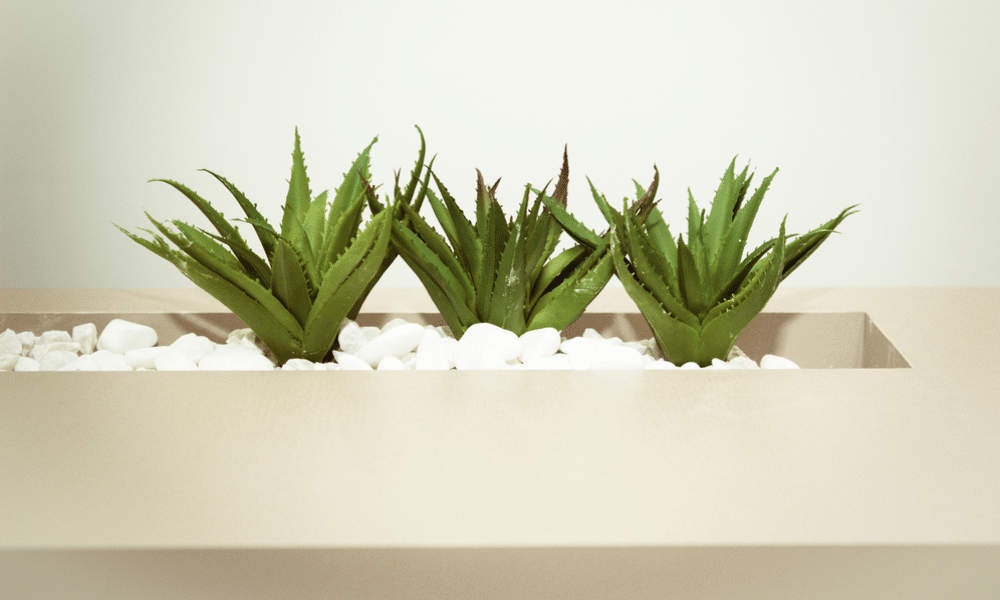What Causes Hemorrhoids?
What are hemorrhoids? Hemorrhoids, (also called piles) are inflamed, swollen veins and surrounding tissue in the rectum or anal canal. If they occur in the rectum, (the end of the large intestine leading to the anus), they are called internal hemorrhoids. If they occur in the anal canal (the opening of the anus), they are external hemorrhoids. The symptoms and treatment of hemorrhoids / piles depend on which type you have. You can have both internal and external piles at the same time. Is there a home remedy for hemorrhoids?
Since many people with inflammatory bowel disease (IBD) and irritable bowel syndrome (IBS) suffer from internal or external hemorrhoids, finding an effective natural remedy for this condition has been at the top of my list – especially since I too developed internal hemorrhoids after the birth of my daughter!
Hemorrhoids are common and, while painful and troublesome, are not considered serious (except by the people that have them!). Those of you who have my Listen To Your Gut book know that there are effective substances you can use to shrink hemorrhoids (like bioflavonoids), but you have to keep taking them, and they don’t always heal hemorrhoids completely.
Natural Remedy For Hemorrhoids
This Symptom Page provides only basic information about natural treatment for internal and external hemorrhoids. You can purchase the eBook Jini’s Healing Guide: Natural Treatments for Hemorrhoids eBook in our Shoppe with full, detailed instructions and dosages.
I came across a powerful hemorrhoid treatment on Dr. Jonathan V. Wright’s website. Dr. Wright is a prolific medical doctor who supports using natural remedies whenever possible, and he has wonderful protocols for using potassium iodide (SSKI) to treat a variety of ailments from internal and external hemorrhoids to ovarian cysts.
I took Dr. Wright’s formula to treat hemorrhoids and began experimenting with it. My first challenge was to see if I could come up with a formula that worked for internal hemorrhoids as well as external. I had also been experimenting with DMSO (dimethyl sulfoxide – a natural substance dervied from tree bark) for a few years, seeing what it would do, so I also wanted to see what happened if I added DMSO to Dr. Wright’s hemorrhoid remedy formula.
Once I found formulas for both internal and external hemorrhoids that worked well for me and my family, I named them HemorrHeal, and gave them to my LTYG Wellness Circle members for further testing.
In our experience hemorrhoids are completely healed in most cases; but at the very least substantial relief is obtained. My own internal hemorrhoids (which I’d had for 6 years after the birth of my daughter) were completely healed in seven days. It is now over 17 years later and they have not come back, so I think it’s safe to say that HemorrHeal is also a long-term treatment for hemorrhoids!
I have tailored my HemorrHeal formula and usage instructions to specific rectal conditions:
- HemorrHeal SUPPOSITORIES for internal hemorrhoids
- HemorrHeal LIQUID for internal or external hemorrhoids
There are two hemorrhoids remedies for those with internal hemorrhoids, depending on your application preference – suppositories or liquid. Personally, I find the suppositories easier to use, but they are a lot more hassle to make. Also, the liquid formula is stronger, so may work better for some people. So you’ll have to take a look at each, maybe test them, and determine which you prefer.
If you want to test both of them, then purchase the kit for HemorrHeal Liquid for Internal Hemorrhoids and just add a jar of cocoa butter to your order – that will give you the instructions and all the ingredients needed to make both the liquid and the suppository hemorrhoid remedies.
In the meantime, watch this video where I show you how to have a bowel movement without aggravating your hemorrhoids:

NOTE: This Symptom Page provides only basic information about natural treatment for internal and external hemorrhoids. You can purchase the eBook Jini’s Healing Guide: Natural Treatments for Hemorrhoids eBook in our Shoppe with full, detailed instructions and dosages.
DMSO and Ingredients Overview
I need to explain DMSO because it is currently not approved for use with other substances. Like many other truly spectacular, natural, non-patentable substances, DMSO has been sidelined by the FDA (Food & Drug Administration). Its only FDA-approved use is for Interstitial Cystitis (for which a drug company holds the patent). Thus, any DMSO product you buy has to carry a warning that it is for use as a “solvent” only.
Hence, I am unable to get HemorrHeal manufactured for you, ready to go. Instead, I can only give you the formula and you have to purchase the ingredients and make it yourself. The other ingredients in HemorrHeal are more common substances – aloe vera juice, potassium iodide (a mineral salt) and cocoa butter – and are non-controversial, so we don’t need to get into a lot of background on them. Although I will give you a brief overview of each, so you can assess the synergy of this formula:
Aloe Vera – is antibacterial and antifungal. It is also used to soothe and speed healing, so it works well to counter the “sting” of potassium iodide and any irritation from DMSO.
Potassium Iodide – a mineral salt also known as SSKI (saturated solution potassium iodide), it is antibacterial and antiviral. It is also known for its ability to break down scar tissue and cysts. Dr. Wright has used it extensively to treat ovarian cysts and fibrocystic breast disease. David M. Derry MD, PhD has also extensively studied the use of topical iodine in regenerating scar tissue. If used long-term (longer than a month or so), you need to monitor your thyroid function though, since iodine impacts the thyroid.
Cocoa Butter – used to solidify the suppositories (for internal hemorrhoid use), cocoa butter is naturally rich in Vitamin E as well as a number of other vitamins and minerals. Vitamin E helps to soothe, hydrate, and balance the skin and also provides the skin with collagen, which assists with wrinkles and other signs of ageing. Cocoa Butter also contains cocoa mass polyphenol (CMP), a substance that inhibits the production of the immuno globulin IgE. IgE is known to aggravate symptoms of both dermatitis and asthma. Cocoa butter is historically a folk remedy for burns, cough, dry lips, fever, malaria, rheumatism, snakebite and wounds.
What Is DMSO?
DMSO (dimethyl sulfoxide) has received the most press as a topical application for relieving arthritis. However, that application is merely the proverbial tip of the iceberg for this multi-tasking healing aid. In many ways, it reminds me of wild oregano oil in that it has such a broad range of uses and the ability to produce such amazing results fairly quickly.
So what exactly is it? Dimethyl sulfoxide is primarily derived from the bark of trees. It was first synthesized by Russian scientist, Dr. Alexander Saytzeff in 1866. Due to its amazing ability to bind with other substances, it was first utilized as a solvent. Then in 1959 it was demonstrated that DMSO could protect red blood cells and other tissues against freezing conditions, so experimentation began with using it to freeze and store organs for transplants.
Then Dr. Stanley Jacob at the University of Oregon Medical School discovered that DMSO relieved burn pains and prevented scar tissue formation. He published his results in 1963 – from then on DMSO usage and experimentation spread like wildfire. It follows logically, that a substance that can prevent scar tissue formation, should also be able to soften or dissolve existing scar tissue and in this capacity DMSO also does not disappoint.
Therapeutic Uses for DMSO
Since then, DMSO has been widely used with professional athletes (from football players to Olympic gymnasts) where it has proven effective with injuries to soft tissue or joint defusions; sprains, strains, dislocations, tendonitis, bursitis, gout, soft tissue tears, myositis (muscle inflammation), broken bones, tennis elbow. Pain is relieved, swelling subsides, and function is recovered more quickly.
Today, we have reams of evidence (from medical doctors and/or PhD scientists) showing that DMSO can also:
- Increase or potentiate cell-mediated immunity in auto-immune diseases like multiple sclerosis, lupus, rheumatoid arthritis, ulcerative colitis, lymphoid thryroiditis, etc.
- Make the immune system more effective by allowing macrophages to move around and through the tissues faster. It can also diminish allergic reactions.
- Increase the permeability of cell membranes, allowing toxins to be flushed from the cell.
- Substitute for water in the living cell, then bind to free radicals and form a substance (dimethyl sulfone plus water with the hydroxyl ion) which can then be excreted out of the body via urine.
- Prevent the formation of scar tissue or adhesions, or dissolve them once present.
- Kill or slow the growth of bacteria, viruses and fungi.
- Greatly reduce or eliminate inflammation, swelling, and pain.
- Quickly heal skin ulcerations, infected wounds, second and third degree burns and other skin lesions. In a study of 1,371 patients with these varying afflictions who were treated with DMSO, 95.04% were discharged as completely cured. Some of these patients had diabetic leg ulcers, which had been present for over 15 years – they were completely healed after daily topical DMSO spray applications for 20 days.
- Clear cataracts, macular degeneration and glaucoma of the eyes – you can purchase glutathione/DMSO/vitamin C eye drops from specialist compounding pharmacies like.
- And much more!
How Does DMSO Work?
How is it that one substance can effect or facilitate such a wide range of healing mechanisms? As Dr. Stanley Jacob says:
“We’ve barely scratched the surface, for this is a new principle in medicine. We’ve had only three new principles in our century – the antibiotic principle, the cortisone principle, and now the DMSO principle – and the DMSO principle is the only new one of our generation.
DMSO is literally water’s alter ego. It moves through membranes and substitutes for water so that it pulls substances through cells that ordinarily would not move through them. This is its basic mechanism of action. The DMSO-water bond is 1.3 times stronger than the water-water bond.”
Dr. Morton Walker in his book, DMSO Nature’s Healer, summarizes DMSO’s healing mechanism thus:
“This attribute of bonding with water better than water molecules themselves is highly significant. It probably is what makes DMSO an entirely different healing power than anything medical science has known before.
The basic therapeutic principle of DMSO is that cellular damage can be altered – the cell healed and restored to near normal – by changing the water structure within the cell. It represents an entirely different means of treating diseases – not as an ordinary drug that works for a given disease, but as a holistic ingredient that brings whole-body cellular function back to normal.”
Cautions In Using DMSO
DMSO nonselectively opens up your tissues to take up whatever is in their environment, so for this reason you have to be very careful with what you store it in (should be dark-colored glass), what’s on your fingers, or your skin where you are applying it, and any instruments you use to apply it with. Stainless steel, glass, ceramic, or wood are all safe materials to use with DMSO. You also need to keep it well out of reach of children.
For myself, I make sure my hands and the area I’m applying it to have been washed with a natural soap and water and that there are no creams, lotions, perfumes, etc. on my skin. I also try not to use any plastic in contact with DMSO – sometimes this is unavoidable (as in the suppository molds), but I do my best wherever/however I can.
For this reason, when applying DMSO rectally, you want to get your rectum as clear of feces as you can. Obviously, this is not entirely possible, but as long as you have had a decent bowel movement, you should be okay. If it’s any consolation, bacteria and other microorganisms from your feces have already been absorbed into your bloodstream through the mucosal lining of your GI tract. And if you have a fissure, all the contents of your feces have had direct contact with your bloodstream. So applying DMSO (which transports substances across cell membranes) in the rectal environment is not such a big deal, in terms of contamination, as it may first appear.
When you get to the suppository instructions, you’ll see that we need to use either a rubber suppository mold, or plastic drinking straws for the suppository mold. Yes, this is not ideal, but unless you can afford a $300 metal urethral suppository mold (this is what we use to make FissureHeal), then plastic is our only option. Lab technicians have been using DMSO for decades and they have a trick to determine whether their protective gloves are safe to use with DMSO. They take their glove and fill one finger with DMSO and leave it overnight. If it has not disintegrated by morning, the glove is safe to use.
I have made the HemorrHeal suppositories in both a standard-size rubber suppository mold and in narrow plastic drinking straws and left both for 24 hours and they have been fine. Don’t forget, we are also using a very low concentration of DMSO in these formulas and the DMSO is also contained within cocoa butter, which helps to buffer it.
The other ‘side effect’ of DMSO is that it has a garlic-type odor – because it is instantly transported throughout the body, you (or others!) may notice this smell on your breath or coming from your pores. Again, because the amount of DMSO in HemorrHeal is very small, this is not really an issue in this application.
WARNING: Please be 100% clear that these are experimental protocols that have been used by me, members of LTYG Wellness Circle and some followers of Dr. Jonathan V. Wright, MD. They have not been tested nor approved by any regulatory body – so you proceed entirely at your own risk.



